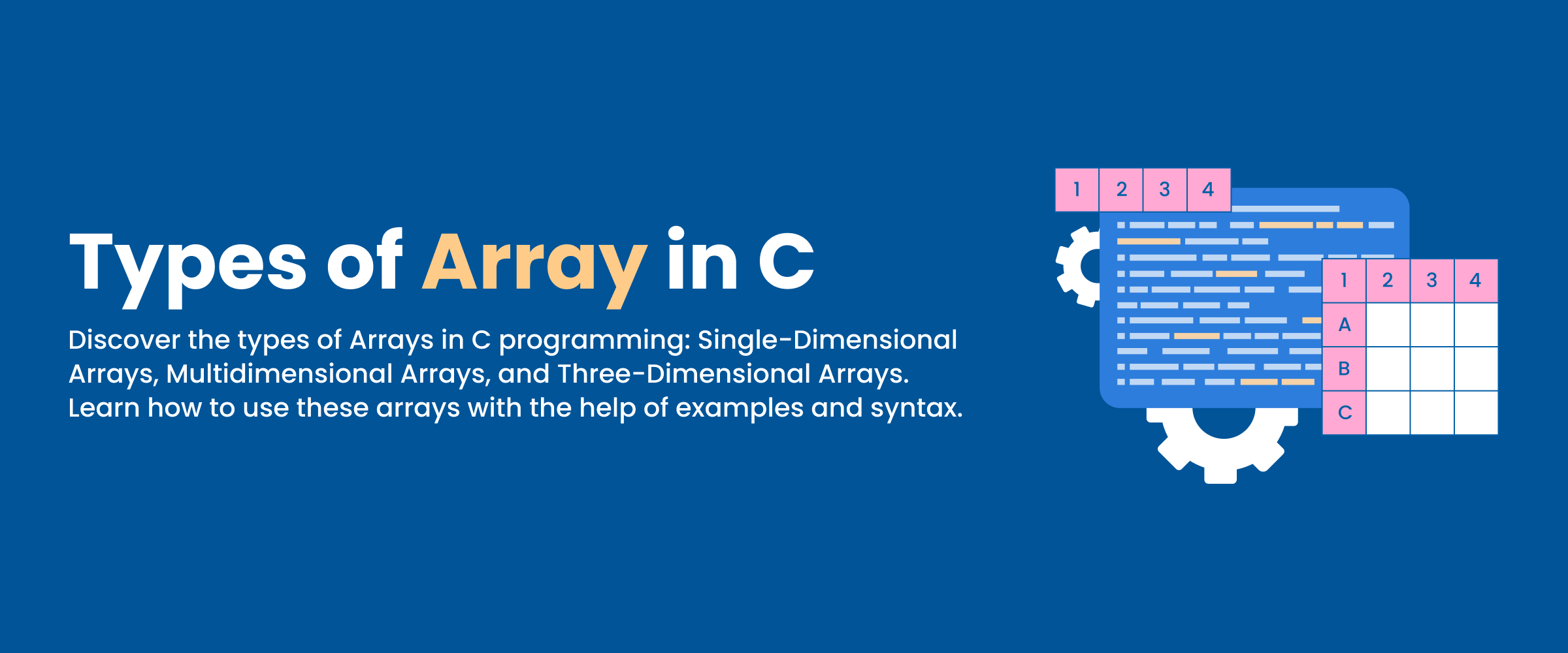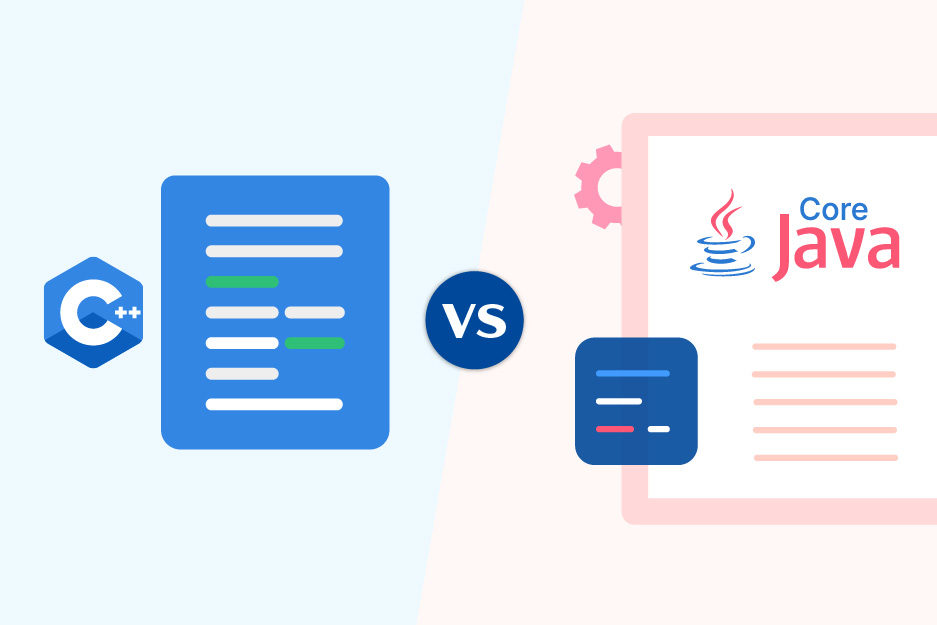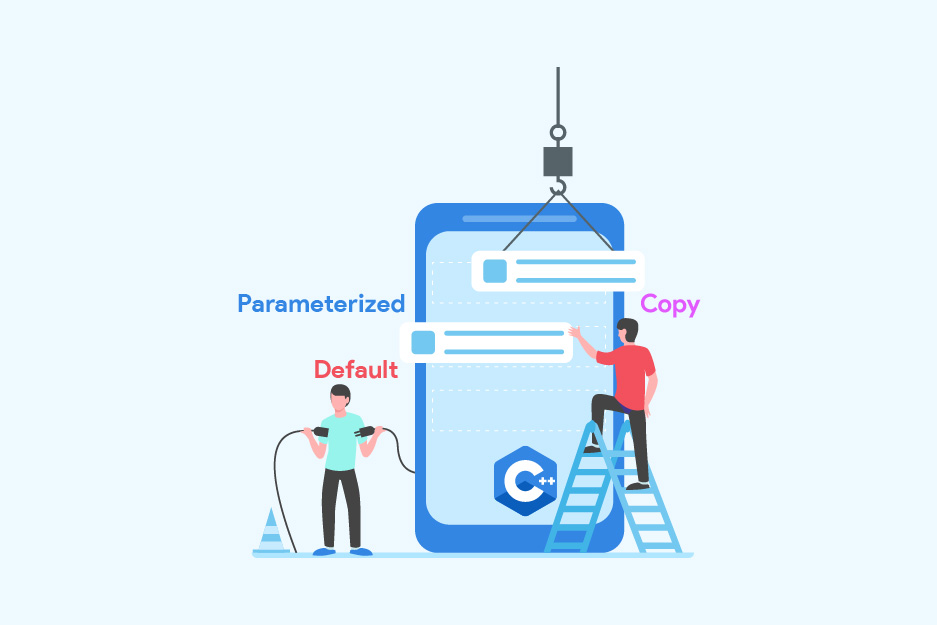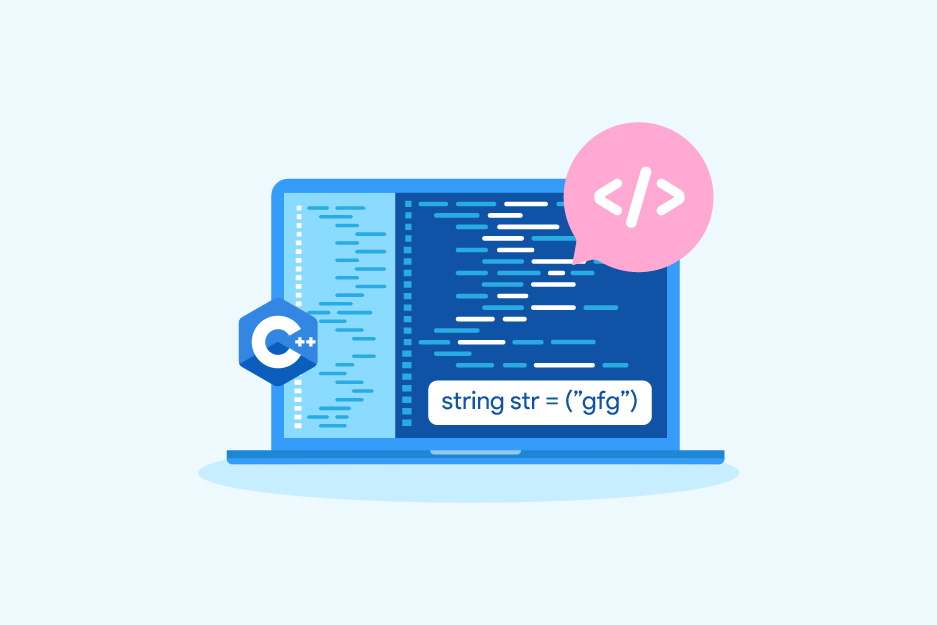Types of Array in C: Properties, Uses, Types, & More
Arrays are a fundamental data structure in the world of programming, and they play a crucial role in the C programming language. If you’re delving into C programming, it’s essential to understand the various types of arrays in C programming at your disposal. In this comprehensive guide, we’ll explore the different types of arrays in C, shedding light on their characteristics, applications, and when to use them.
Understanding Arrays in C
Before diving into the different types of arrays in C language, let’s establish a solid foundation by understanding what arrays are and how they work in the C programming language.
An array is a collection of elements, all of the same data type, stored in contiguous memory locations. These elements can be accessed by their index or position within the array. In C, arrays are incredibly versatile, allowing you to work with various data types, including integers, characters, and user-defined structures.
Types of Arrays in C
A detailed explanation of the different types of arrays in C is listed below.
1. The Standard Array
The most common type of array in C is the standard array. This type of array is characterized by its fixed size, meaning you must specify the number of elements it can hold when declaring it. For example, if you want to create an array of integers that can store ten values, you would declare it as follows:
int standardArray[10];Standard arrays are efficient in terms of memory usage and access speed, but they have a drawback – their size is fixed at compile time.
2. Dynamic Arrays
Dynamic arrays, also known as dynamically allocated arrays, provide a solution to the fixed size limitation of standard arrays. These arrays allow you to allocate memory for your array at runtime using functions like malloc and calloc. This means you can determine the size of the array during program execution, making dynamic arrays incredibly flexible.
Here’s how you can create a dynamic integer array in C:
int* dynamicArray;
int size = 10; // You can set the size as per your requirement
dynamicArray = (int*)malloc(size * sizeof(int));
Remember to free the memory allocated for dynamic arrays using the free function when you’re done to avoid memory leaks.
3. Multidimensional Arrays
C supports multidimensional arrays, which are essentially arrays of arrays. They are often used to represent data in the form of matrices or tables. You can create 2D arrays, 3D arrays, and even higher-dimensional arrays to suit your needs.
Here’s an example of a 2D array in C:
int matrix[3][3];Multidimensional arrays are handy when dealing with data that has multiple dimensions, such as images, game boards, or scientific data.
4. Jagged Arrays
While C doesn’t have native support for jagged arrays like some other languages, you can simulate them using an array of pointers. Jagged arrays are arrays of arrays where each sub-array can have a different size.
Here’s how you can create a jagged array of integers in C:
int* jaggedArray[5]; // An array of integer pointersEach element of jaggedArray can point to a separate dynamically allocated array, allowing for flexibility in storage.
5. Character Arrays
Character arrays, also known as strings, are a special type of array in C. They consist of a sequence of characters terminated by a null character ‘\0’. Character arrays are extensively used for text manipulation and are an integral part of C’s standard library.
Here’s a simple example of a character array:
char greeting[] = "Hello, World!";Character arrays offer versatile string manipulation functions like strlen, strcpy, and strcat for working with text data.
Properties of Array
Below is a list of properties of different types of arrays in C.
- Homogeneous Data: Arrays store elements of the same data type, ensuring uniformity within the collection. For example, an integer array holds only integers and a character array holds only characters.
- Fixed Size: Traditional arrays have a fixed size, meaning you must specify the number of elements when declaring the array. This size remains constant throughout the program’s execution.
- Contiguous Memory: Array elements are stored in adjacent memory locations, allowing for efficient access through indexing. This contiguous memory allocation ensures speedy element retrieval.
- Zero-Based Indexing: Most programming languages use zero-based indexing, meaning the first element is accessed using index 0, the second with index 1, and so on.
- Direct Access: Elements in an array are accessed directly using their index, making it possible to retrieve or modify any element without traversing the entire array.
- Static Allocation: In some cases, arrays are allocated memory at compile time, and their size cannot be changed during program execution. This static allocation simplifies memory management but may limit flexibility.
- Dynamic Allocation: In languages like C, dynamic arrays can be created with memory allocated at runtime using functions like malloc or calloc. This dynamic allocation allows for variable-sized arrays but requires manual memory management.
- Random Access: Arrays support random access, meaning you can access any element in constant time, regardless of its position within the array.
- Deterministic Element Ordering: Elements in an array maintain their order, with the first element remaining first, the second remaining second, and so on, unless explicitly rearranged.
- Fixed Overhead: Arrays have a fixed overhead for storing metadata like the length or size of the array, which is typically a small constant value.
- Efficient for Iteration: Arrays are well-suited for iterating through collections of data, making them ideal for implementing loops and algorithms that process data sequentially.
Uses of Array
Before understanding the different types of arrays in C, you need to understand why arrays are used.
- Data Storage: Arrays are used to store collections of data elements of the same type, such as integers, characters, or floating-point numbers, in a structured manner.
- Efficient Access: They provide efficient and direct access to individual elements through indexing. Elements can be accessed using their position within the array.
- Iterating Through Data: Arrays are ideal for iterating through a set of data, making it easy to perform operations on each element sequentially.
- Mathematical Operations: Arrays are essential for performing mathematical operations on datasets, like finding the sum, average, or standard deviation of a list of numbers.
- String Manipulation: In programming, character arrays are commonly used to manipulate and store strings of characters, making them vital for text processing.
- Database Management: Arrays can be used to manage database records or tabular data, allowing for efficient retrieval and manipulation of information.
- Multi-dimensional Data: Arrays can be multi-dimensional, making them suitable for representing complex data structures like matrices, tables, and grids.
- Sorting and Searching: Arrays are crucial for implementing sorting and searching algorithms, such as binary search and quicksort.
- Dynamic Memory Allocation: Dynamic arrays allow for memory allocation at runtime, accommodating varying amounts of data, which is useful in scenarios where the data size is unknown in advance.
- Efficient Space Usage: In cases where memory is a concern, arrays offer efficient memory usage since elements are stored in contiguous memory locations.
- Efficient Data Transfer: Arrays enable efficient data transfer between functions and modules in a program, enhancing code reusability and modularity.
Conclusion
Arrays are a vital part of C programming, and understanding the different types of array in C available is crucial for writing efficient and effective code. We’ve explored standard arrays, dynamic arrays, multidimensional arrays, jagged arrays, and character arrays, each serving its unique purpose in C programming.
As you embark on your C programming journey, consider the nature of your data and the requirements of your application to choose the most suitable array type. Whether it’s a fixed-size array, a dynamically allocated array, or a multidimensional array, mastering the array types in C will undoubtedly enhance your programming skills.






